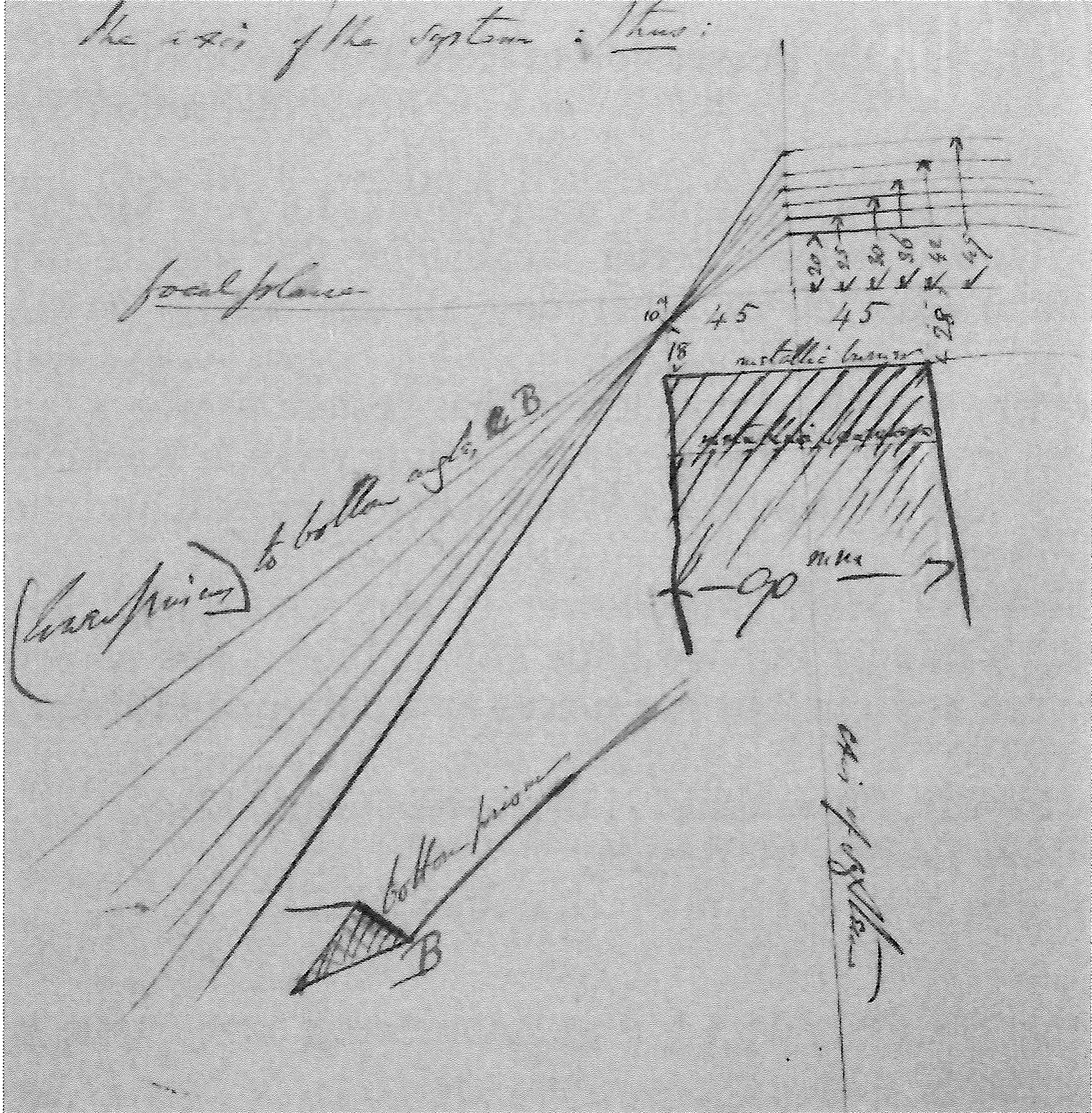James Timmins Chance to Faraday 24 August 1860
Hamstead Birmingham 24 Augt 1860
My dear Sir,
1. Distance in the fitting-room to the first testing place is 14 yards. To the second or extreme place 22 yards.
2. Distance in the yard to the first observing place is 62 yards. To the second observing place is 105 yards.
3. Focal plane is 28 millimetres above the metallic burner (i.e. excluding the wick).
4. Focal point of the upper reflectors is 10m.m. above the focal plane:- but I shew the divergence of the prisms themselves downwards.
5. For lower reflectors, in the fixed light which you saw, the focal sections of the flame for all the reflections for their lower angle intersected each other 18mm above the metallic burner - (that is 10m.m. below the focal plane) - in a vertical which is 45mm from the axis of the system: thus;

giving as foci - the points 20 - 25 - 30 - 36 - 42 - 49 millimetres above the focal plane, (neglecting fractions of a millimetre), in the axis of the system.
In the revolving light this point of intersection was only 14m.m. above the burner, in the same vertical line.
6. The pencil diagrams &c referred to the Whitby light - viz
Apparent dip (for ray at sea-horizon) 17’ 48”. Real (corresponding) dip at the Light itself = 15’.14”
<-><->
I purpose sending you photographs of the flame of the lamp wh: you saw1.
Ever most truly yours | James T. Chance
Please cite as “Faraday3835,” in Ɛpsilon: The Michael Faraday Collection accessed on